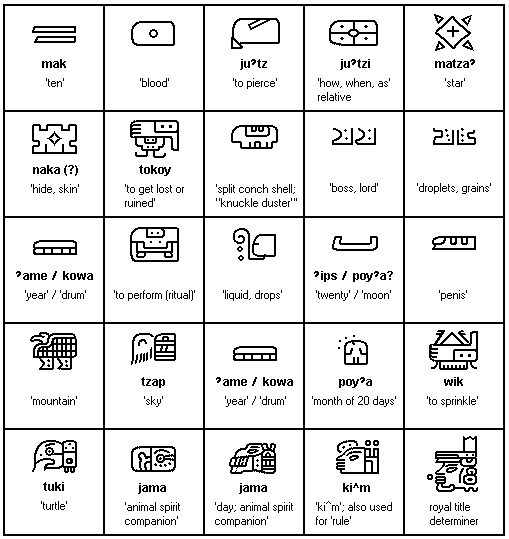

The four most extensive Isthmian texts are those found on:
The La Mojarra Stela 1 (shown at right)
The Tuxtla Statuette
Tres Zapotes Stela C
A Teotihuacan-style mask.
Other texts include:
A few Isthmian glyphs on four badly weathered stelae - 5, 6, 8, and probably 15 - at Cerro de las Mesas.
Approximately 23 glyphs on the O'Boyle "mask", a clay artifact in a private collection of unknown provenance.
A small number of glyphs on a pottery-sherd from Chiapa de Corzo. This sherd has been assigned the oldest date of any Isthmian script artifact: 450-300 BCE.
In a 1993 paper, John Justeson and Terrence Kaufman proposed a partial decipherment of the Isthmian text found on the La Mojarra Stela, claiming that the language represented was a member of the Zoquean language family. In 1997, the same two epigraphers published a second paper on Epi-Olmec writing, in which they further claimed that a newly discovered text-section from the stela had yielded readily to the decipherment-system that they had established earlier for the longer section of text. This led to a Guggenheim Fellowship for their work, in 2003.
The following year, however, their interpretation of the La Mojarra text was disputed by Stephen D. Houston and Michael D. Coe, who had tried unsuccessfully to apply the Justeson-Kaufman decipherment-system to the Isthmian text on the back of the hitherto unknown Teotihuacan-style mask (which is of unknown provenance and is now in a private collection).
The matter is still under discussion. In Lost Languages (2008) Andrew Robinson summarizes the position as follows:> Overall, then, the case for the Justeson/Kaufman 'decipherment' of Isthmian is decidedly unproven and currently rests on shaky foundations ... What it needs, more urgently than some other 'decipherments' given its evident linguistic sophistication, is the discovery of a new text or texts as substantial as the one found at La Mojarra in 1986. Epi-Olmec Script Wikipedia